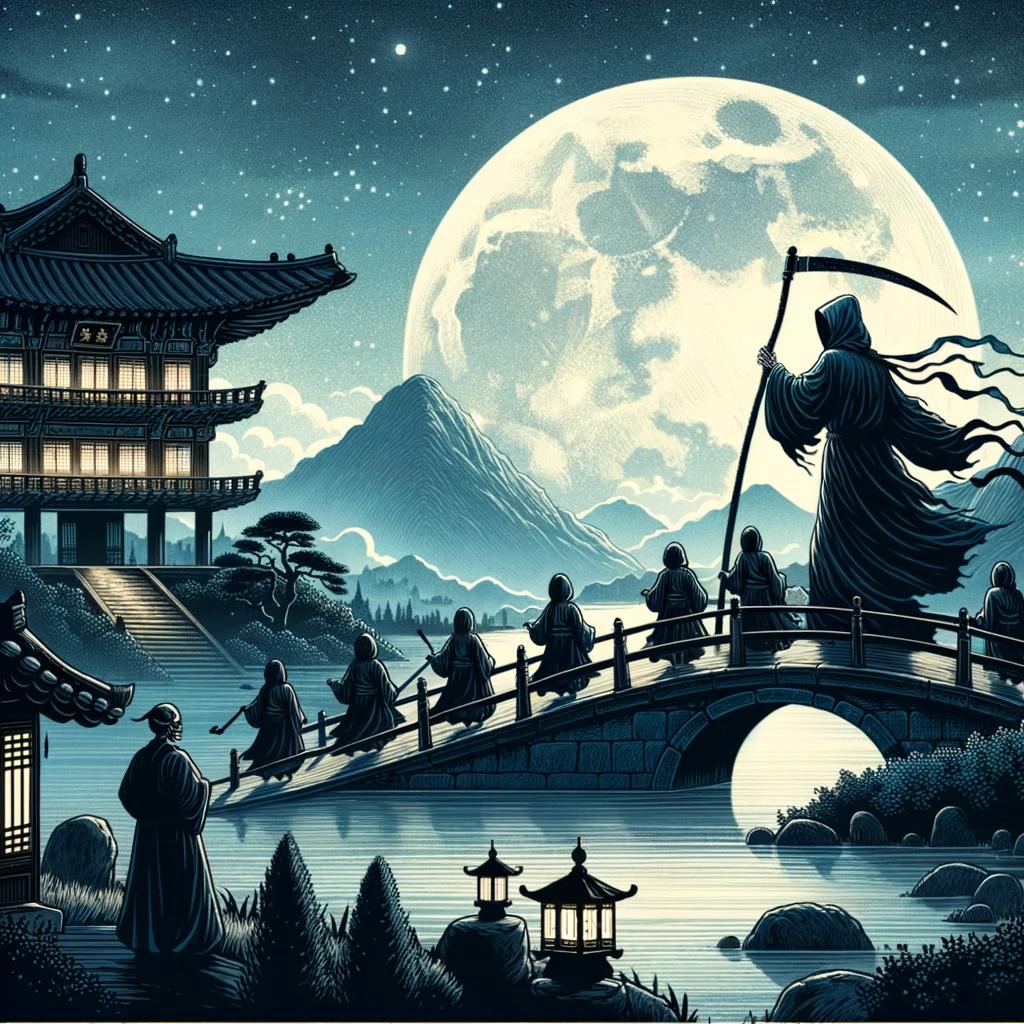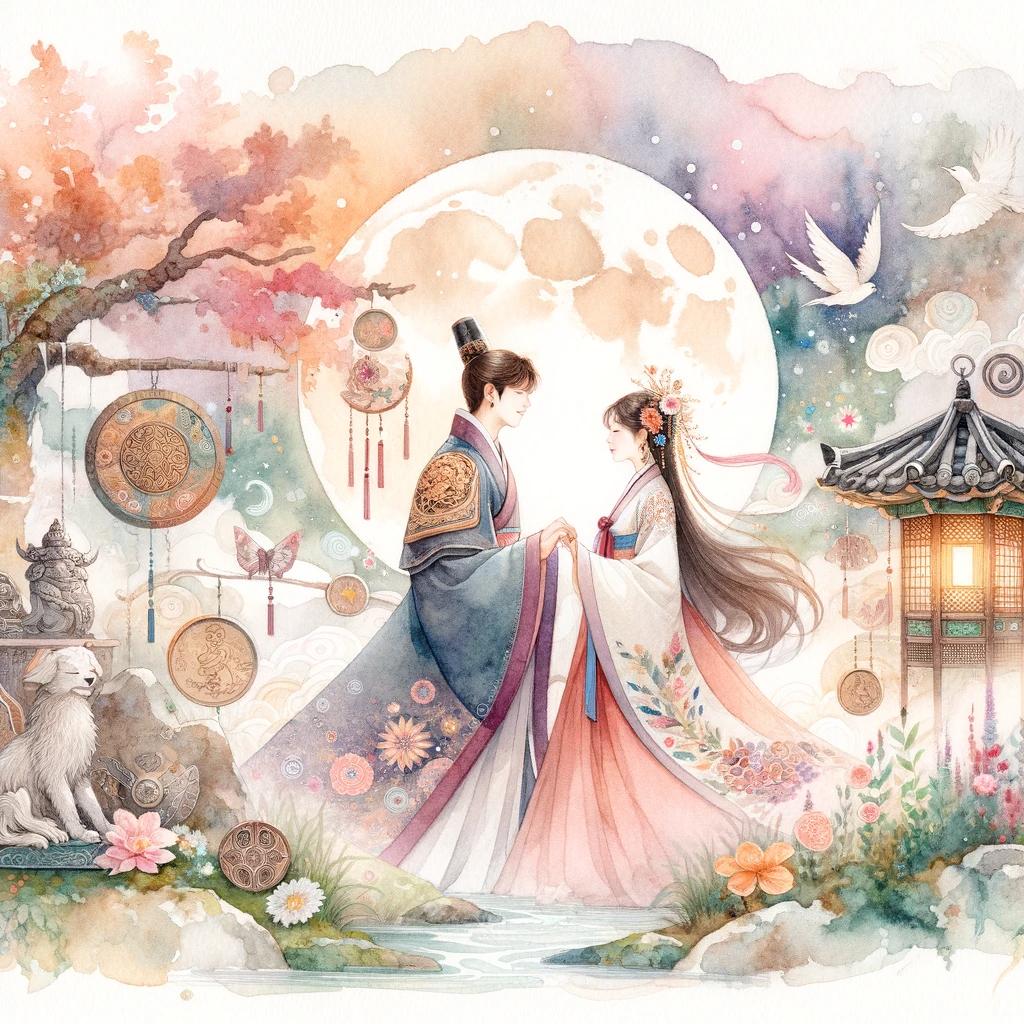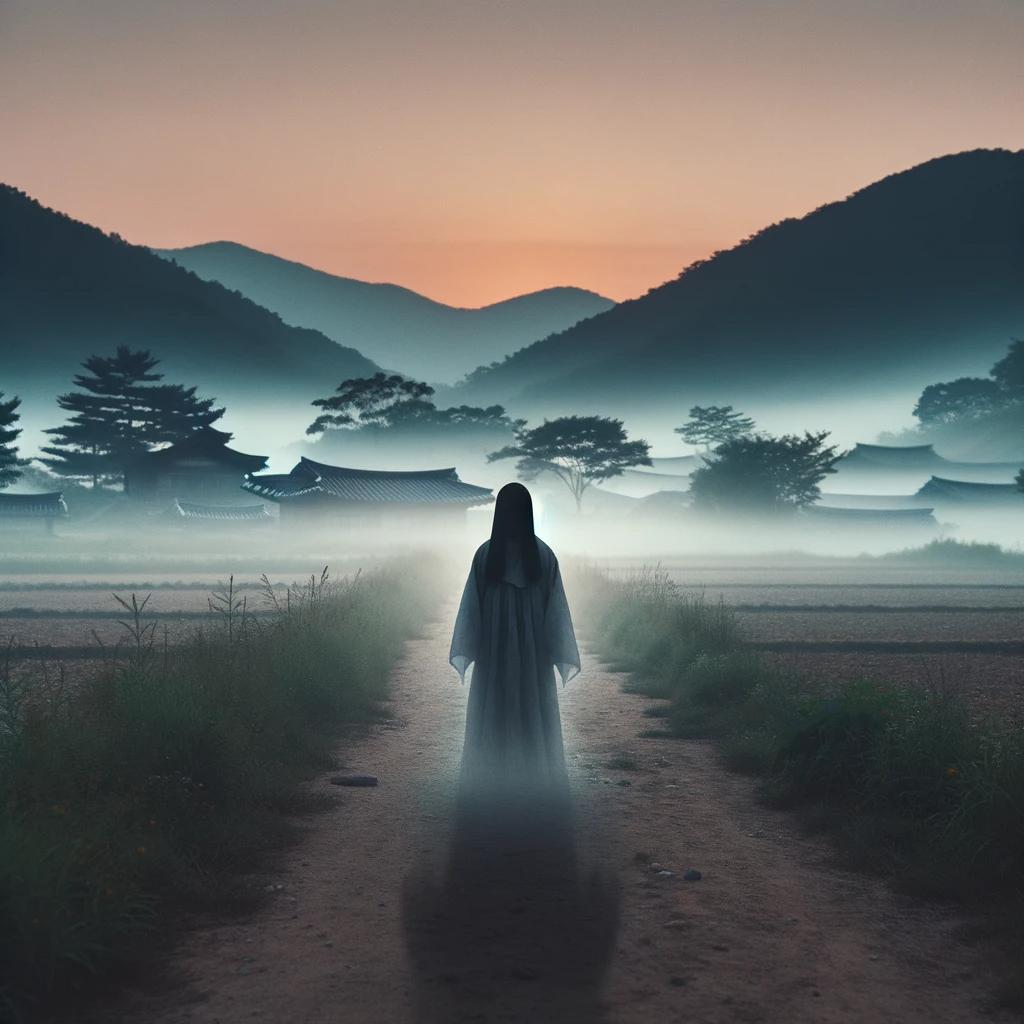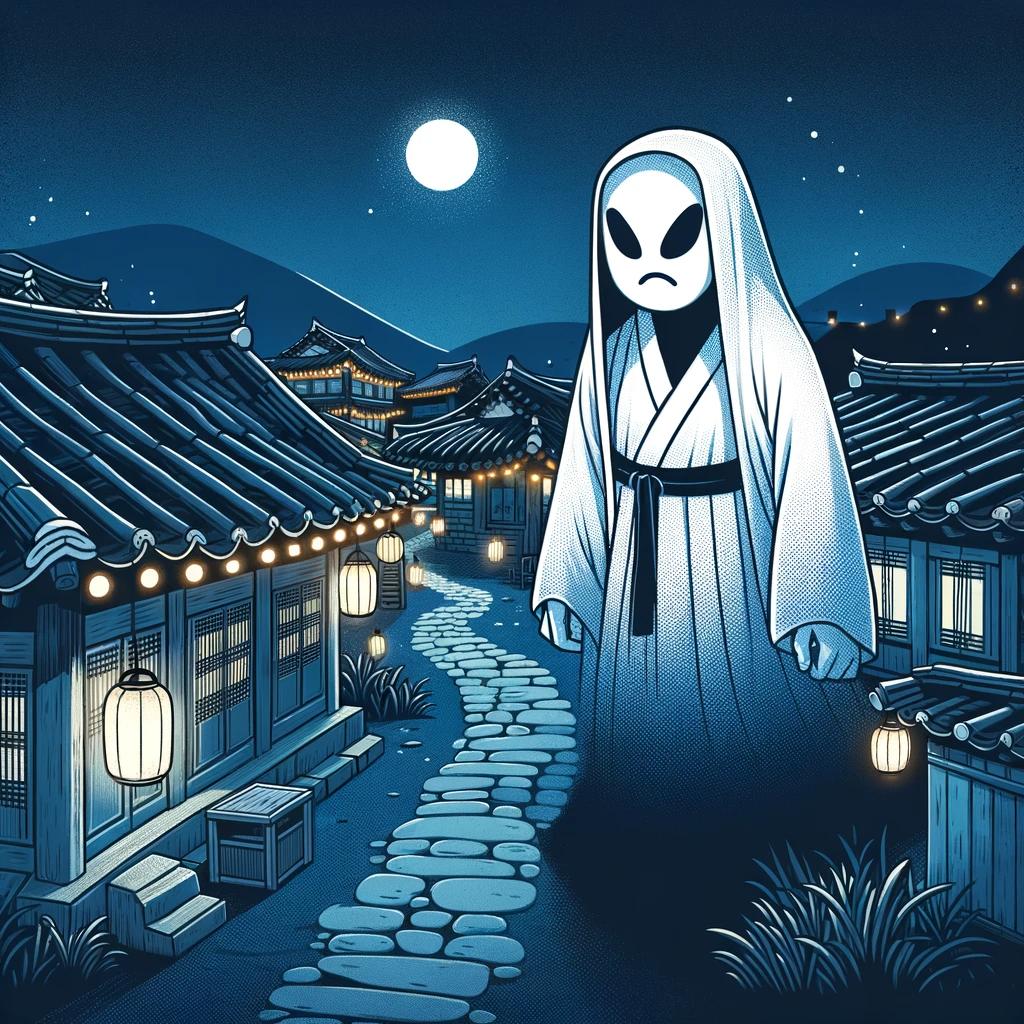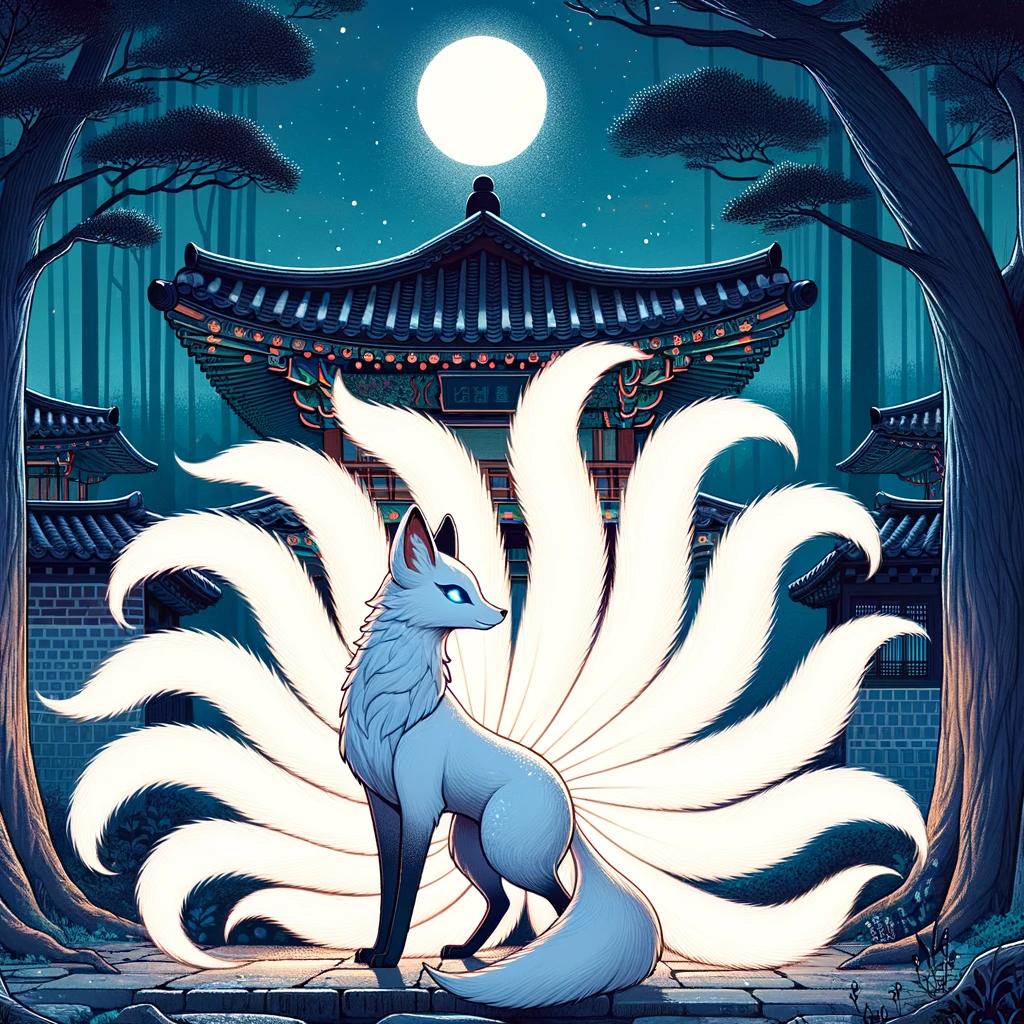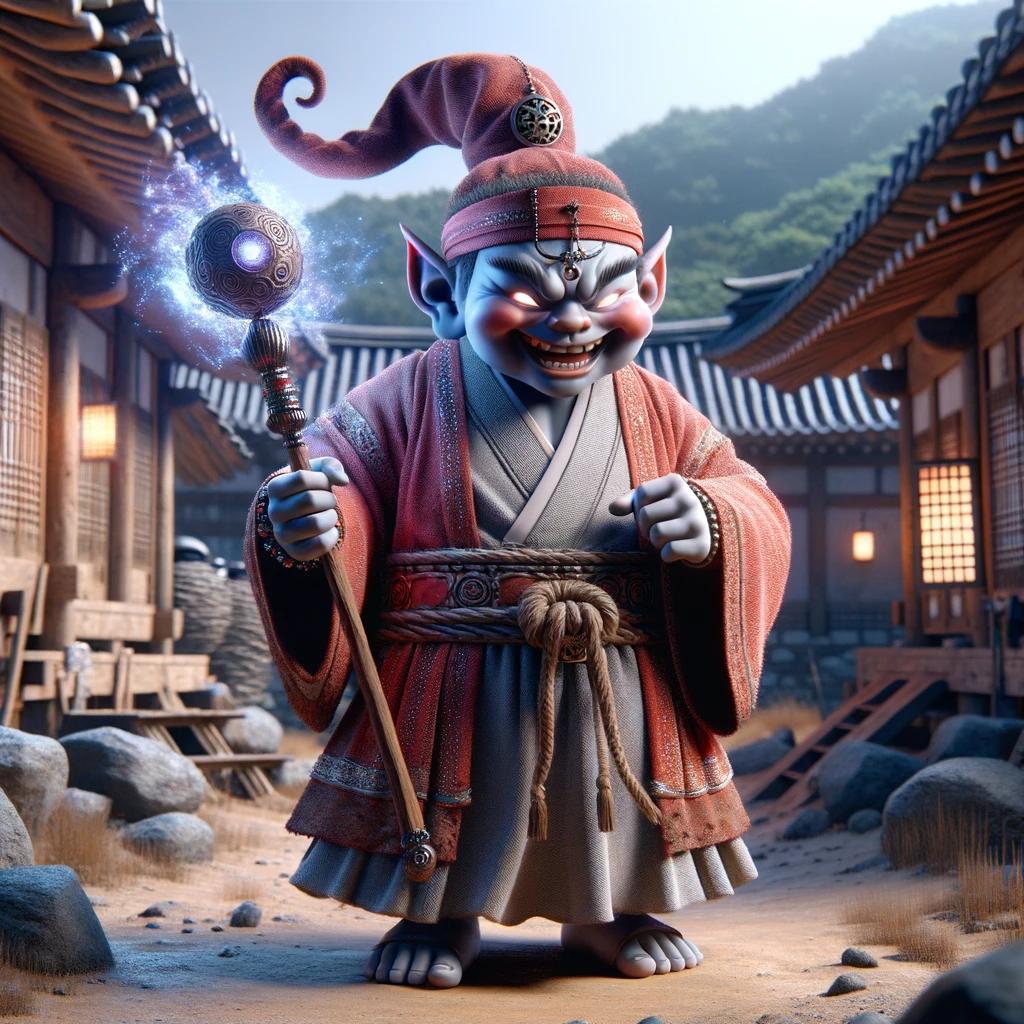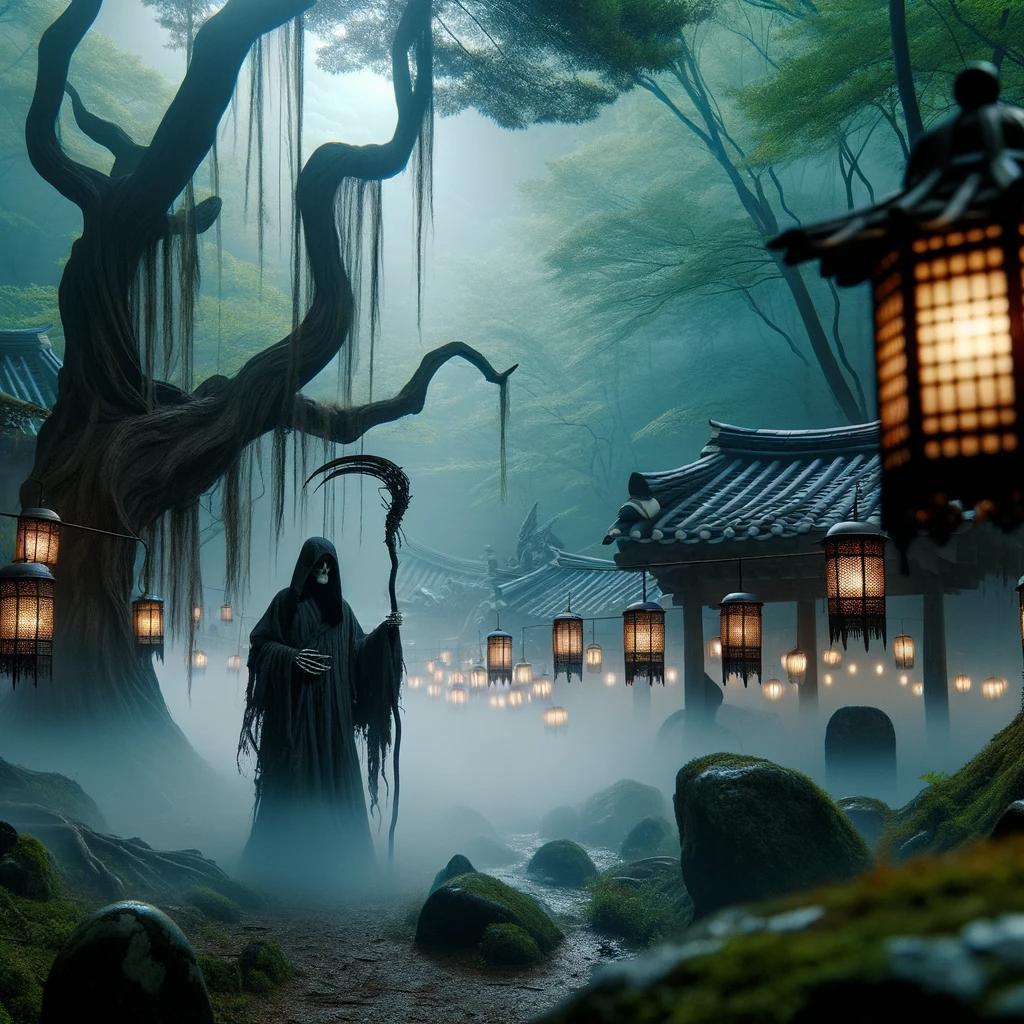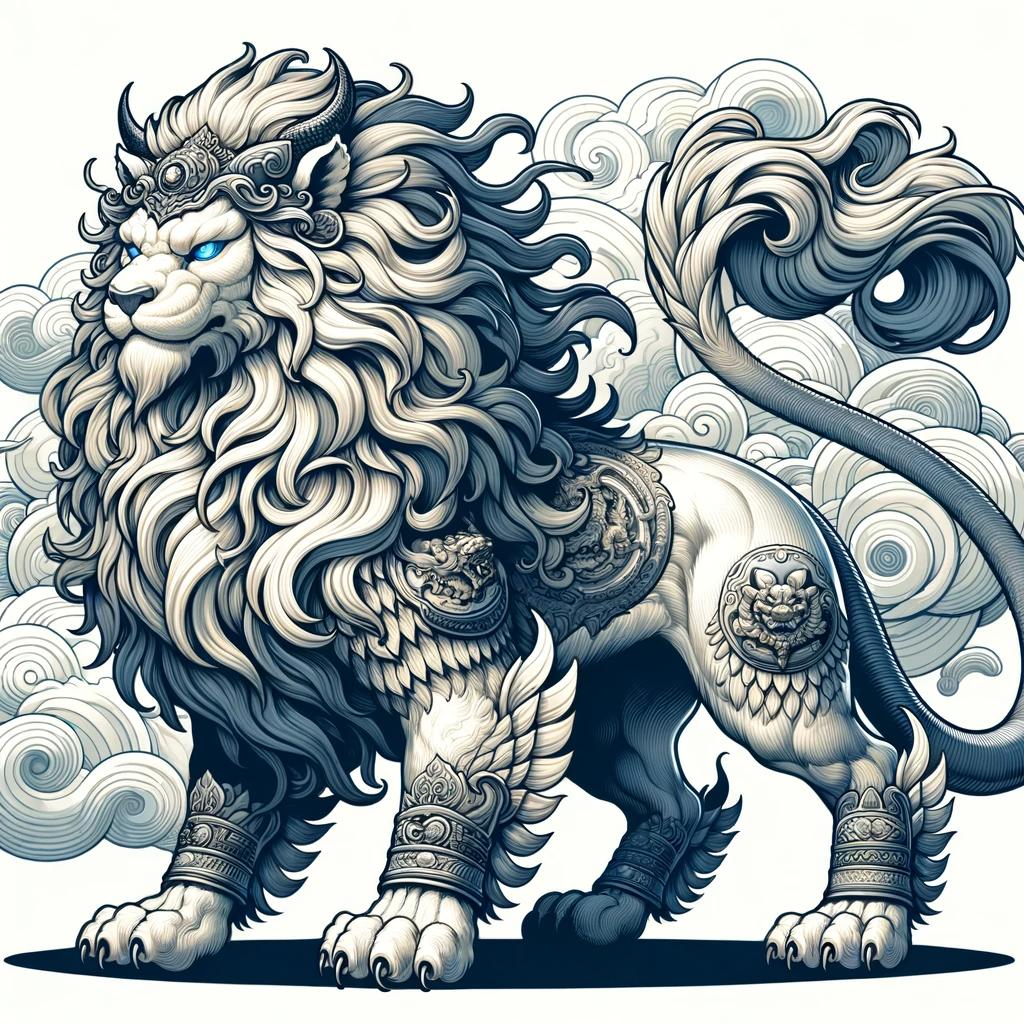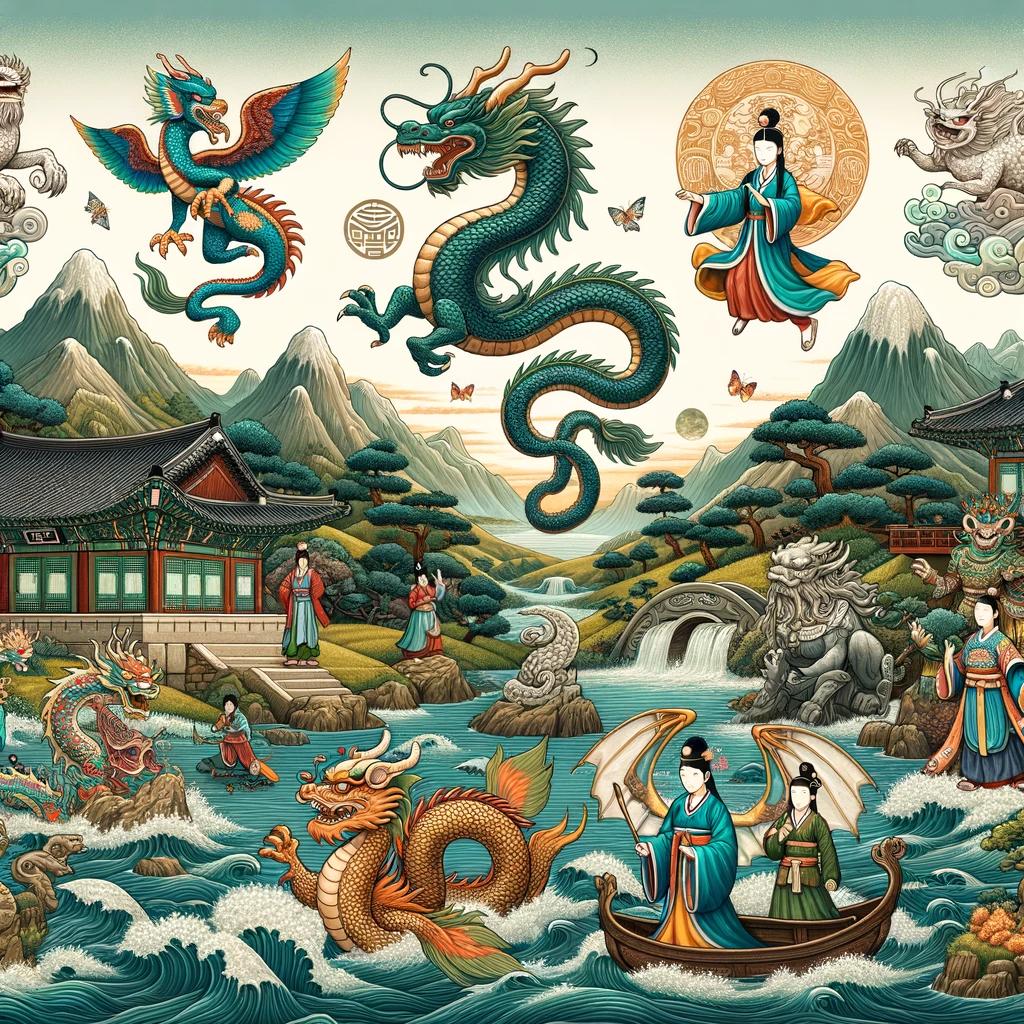Exploring Korean Mythology: The Grim Reaper and its Role in Korean Folklore
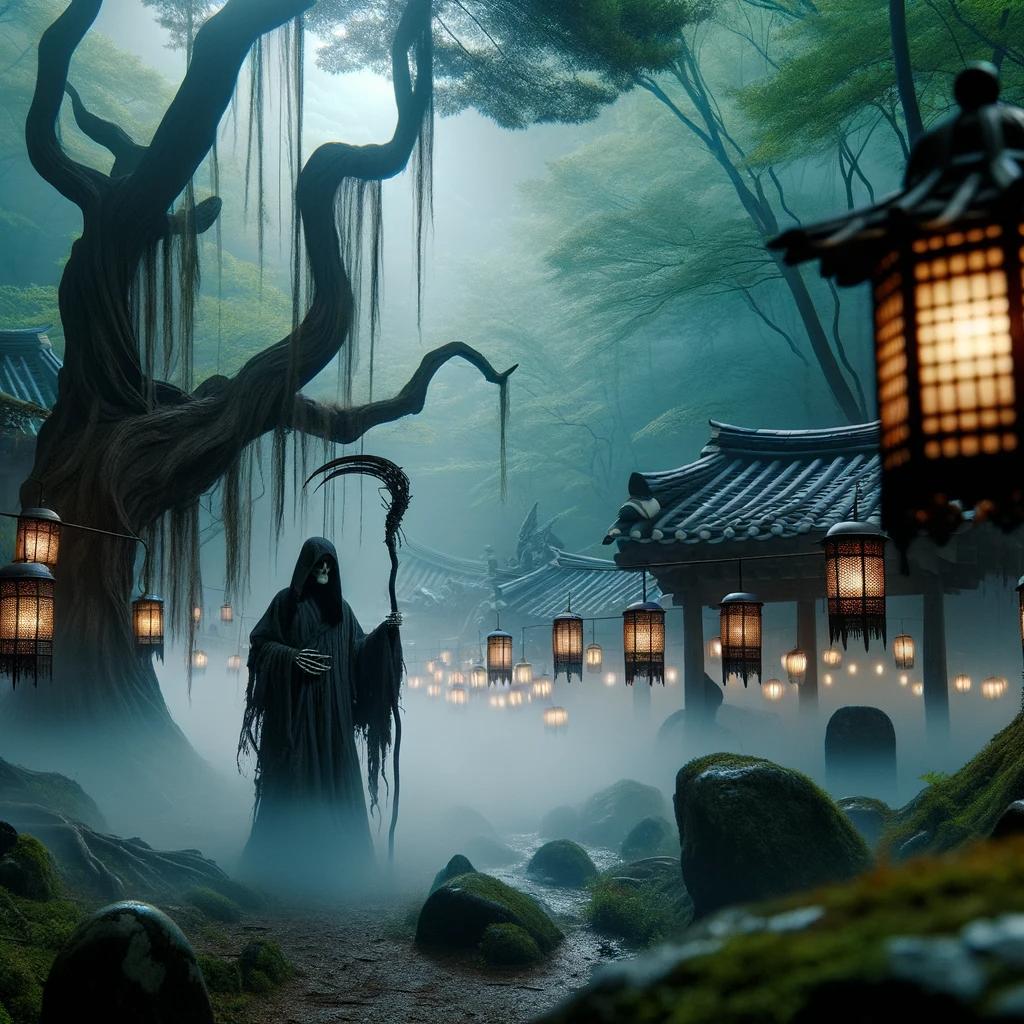
Korean mythology features a variety of supernatural beings, including the Grim Reaper, that have been passed down through generations. The Grim Reaper, known as the Jeoseung-saja in Korean folklore, plays a significant role in Korean culture and is often depicted as a stern figure guiding souls to the afterlife.
Alongside the Grim Reaper, other mythical creatures such as goblins, spirits, and the infamous Nine-Tailed Fox (Gumiho) are integral to Korean mythology. These legends and creatures from Korean mythology have captivated audiences and influenced contemporary media.
Additionally, Korean beliefs surrounding death and the afterlife are deeply rooted in their culture, with specific rituals and practices associated with these beliefs.
Overview of Korean Mythology
Background and Origins of Korean Mythology
Korean mythology is a vast and intricate tapestry of ancient beliefs and folklore that has shaped the cultural identity of the Korean people. Rooted in shamanistic traditions and influenced by neighboring civilizations, Korean mythology has evolved over centuries, reflecting the country’s history and religious practices.
The origins of Korean mythology can be traced back to prehistoric times when indigenous tribes worshipped various nature deities and spirits. As the Korean Peninsula became geographically and culturally connected to China and Japan, elements of Chinese Taoism, Buddhism, and shamanism were incorporated into Korean mythology.
Throughout its history, Korean mythology has been shaped by various ruling dynasties, invasions, and societal changes. Mythological tales were passed down orally for generations, preserving the rich heritage of gods, heroes, and legendary creatures that inhabit the Korean pantheon.
Key Themes and Concepts in Korean Mythology
Several key themes and concepts are prevalent in Korean mythology, providing insights into the cultural and spiritual beliefs of the Korean people.
One prominent theme is the worship of gods associated with natural forces, such as mountains, rivers, and celestial bodies.
These deities were believed to govern the elements and possess supernatural powers. For example, the mountain god, known as San-Shin, was revered as a guide and protector of travelers.
Another important concept in Korean mythology is the belief in ancestral spirits and their influence on daily life.
Ancestors were venerated and their spirits were believed to provide guidance and protection to their descendants. Rituals and ceremonies were conducted to honor and appease these ancestral spirits.
Furthermore, Korean mythology often explores the dichotomy between good and evil, light and darkness.
Mythical creatures and spirits symbolize these opposing forces, creating narratives that depict the eternal struggle between morality and malevolence.
Myths and legends in Korean folklore are also imbued with moral lessons and teachings.
These stories often convey the values of filial piety, loyalty, righteousness, and the consequences of one’s actions.
Overall, Korean mythology serves as a reflection of the Korean people’s beliefs and cultural heritage, providing a profound understanding of their history, worldview, and spiritual practices.
The Grim Reaper in Korean Folklore
The Grim Reaper, known as Jeoseung-saja in Korean mythology, holds a significant place in the rich tapestry of Korean folklore. Let’s delve into the depiction, characteristics, and role of the Grim Reaper in Korean culture.
Depiction and Characteristics of the Grim Reaper
Jeoseung-saja is often portrayed as a solemn and enigmatic figure, clad in a traditional black hanbok. This dignified being serves as the “Enviado del Mundo Inferior,” a psychopomp that escorts souls from the physical realm to the underworld.
The Grim Reaper is typically depicted as a stern and unforgiving figure, carrying out his duties with a sense of austerity. While his appearance may vary in depictions, his purpose remains constant: guiding souls to Hwangcheon, the path leading to the afterlife.
Jeoseung-saja’s commitment to his duties is unwavering, and he is portrayed as a diligent and unwavering bureaucrat of the underworld, following the orders of King Yeomna, one of the ten rulers of the netherworld.
Role and Significance of the Grim Reaper in Korean Culture
The Grim Reaper holds immense importance in Korean culture, reflecting the deep-rooted beliefs and rituals surrounding death and the afterlife. As a psychopomp, Jeoseung-saja ensures a smooth transition of souls, assigning them their rightful place in the realm beyond.
His presence in Korean mythology serves to enforce the belief in a harmonious cycle of life and death, emphasizing the journey of the soul beyond physical existence. The Grim Reaper symbolizes the inescapable nature of death, reinforcing the notion of accountability for one’s actions in life.
Additionally, the Grim Reaper’s strict adherence to order and duty serves as a moral reminder, emphasizing the consequences of one’s choices and actions. Through these cultural and mythological representations, the Grim Reaper provides a lens into the core values and beliefs of Korean society.
Overall, the Grim Reaper, as Jeoseung-saja, exists as a powerful and symbolic entity in Korean folklore, embodying concepts of death, transition, and the afterlife. His presence serves as a reminder to cherish life and embrace the inevitable journey that awaits us all.
Other Supernatural Creatures in Korean Mythology
Korean mythology is filled with a diverse array of supernatural creatures that capture the imagination and bring a sense of wonder to the folklore. Let’s explore some of the notable beings that play a significant role in Korean mythology:
Goblins and Spirits in Korean Folklore
In Korean folklore, goblins (known as dokkaebi) and spirits (known as gwishin) hold a prominent place.
Dokkaebi are legendary creatures with supernatural powers, often depicted with distinctive features such as horns, bulging eyes, sharp teeth, and long claws. While they are generally considered harmless, they enjoy playing tricks on humans and challenging them to traditional Korean wrestling called ssireum.
Dokkaebi possess magical objects like the ‘dokkaebi hat,’ which grants invisibility, the ‘dokkaebi club,’ which functions as a magical wand, and the dokkaebi’s fire, a brilliant blue flame.
Gwishin, on the other hand, are vengeful spirits that dwell in the physical world.
Typically portrayed as innocent young women whose deaths were caused by family conflicts or sexual violence, these ghosts haunt abandoned areas such as schools, buildings, or houses. Female vengeful ghosts, known as gwishin, have become a popular trope in Asian cinema and television, appearing as vengeful apparitions seeking retribution.
Korean Ghosts and Their Legends
Korean mythology is also replete with stories of ghosts, representing the belief in the existence of spirits beyond death. These ghosts often stem from tragic circumstances or unfinished business in their earthly lives.
Ghosts play a significant role in Korean folklore as they are believed to have the power to affect the living. They are depicted in various forms and have different origins and motivations.
The Nine-Tailed Fox (Gumiho) in Korean Mythology
The gumiho, or the Nine-Tailed Fox, is a captivating and mysterious creature of Korean mythology. It is a fox capable of transforming into a beautiful woman with the intention of seducing and devouring unsuspecting men.
The primary purpose of a gumiho is to become a human by absorbing the energy, particularly the heart or liver, of humans. This folklore figure is deeply ingrained in Korean culture and has been portrayed in popular television series and dramas such as ‘My Girlfriend Is a Gumiho’ (2010).
Popular Cultural Representations of Korean Mythology Grim Reaper
When it comes to popular cultural representations, the Grim Reaper from Korean mythology has made its mark in various forms of media. From television series to films, the portrayal of the Grim Reaper has captured the imagination of audiences both in South Korea and around the world.
Television Series and Films Featuring the Grim Reaper
Television series and films have embraced the concept of the Grim Reaper, often exploring its role in the Korean folklore. One notable example is the widely acclaimed series ‘Guardian: The Lonely and Great God’ (2016), where the Grim Reaper is presented as a central character.
The series delves into the complex nature of the Grim Reaper’s existence and its interactions with humans and other supernatural beings.
Other television shows and films have also incorporated the Grim Reaper in their plotlines and character development.
These include ‘Black’ (2017), a supernatural thriller that revolves around a human detective who gains the ability to see Grim Reapers and is intertwined with the afterlife. These representations showcase the Grim Reaper as a mysterious and powerful entity, adding intrigue and suspense to the narratives.
Influence of Korean Mythology on Contemporary Media
Korean mythology, including the mythology of the Grim Reaper, has had a significant influence on contemporary media in various ways. It has inspired not only fictional portrayals but also visual aesthetics, storytelling techniques, and themes in Korean cinema and television.
The unique cultural and historical context of Korean mythology has provided a distinct flavor to the media landscape. It has allowed storytellers to explore themes of life, death, fate, and the afterlife in a way that resonates with both Korean and international audiences.
The influence of Korean mythology can be seen in a range of genres, from fantasy and supernatural thrillers to romance and drama.
- Visual Aesthetics: The visual representation of supernatural beings in Korean mythology, including the Grim Reaper, has influenced the visual style of films and television shows.
From intricate costumes and makeup to stunning cinematography, these visuals create a captivating and immersive experience for the audience.
- Symbolism and Themes: The themes explored in Korean mythology, such as the cycle of life and death, the consequences of one’s actions, and the existence of supernatural realms, have provided compelling narratives and thought-provoking storytelling in contemporary media.
These themes add depth and complexity to the overall storytelling.
- Character Archetypes: The archetypal figures found in Korean mythology, such as the Grim Reaper, have become iconic characters in popular culture.
Their characteristics and roles in mythology have been adapted and reimagined in various ways, contributing to the richness and diversity of characters in contemporary media.
Overall, the popular cultural representations of the Grim Reaper in Korean mythology have not only entertained audiences but also served as a gateway to explore the intriguing world of Korean folklore.
Through television series, films, and the broader influence on contemporary media, Korean mythology continues to captivate and inspire viewers around the world.
The Grim Reaper and the Afterlife in Korean Beliefs
Korean Views on Death and the Afterlife
In Korean culture, death is seen as a transitional phase from one life to another, where the deceased continue to exist in the spirit world.
The afterlife, known as “Igyeong,” holds great significance in Korean beliefs and is often depicted as a harmonious realm where ancestors and spirits reside. Koreans believe in maintaining a strong connection with their ancestors, as they are believed to provide guidance and protection to their living descendants.
According to Korean mythology, the fate of a person’s soul in the afterlife is influenced by their actions and conduct during their earthly life. It is believed that good deeds and virtuous behavior can secure a favorable position in the afterlife, while negative actions can result in a restless and troubled existence in the spirit realm.
A key aspect of Korean views on death and the afterlife is the belief in the importance of filial piety. Koreans place great emphasis on honoring and respecting their ancestors, as they are considered the guardians of the family lineage and wisdom.
Ancestral rituals, such as Charye and Seongmyo, are practiced to pay respects and offer sustenance to the departed souls, ensuring their well-being in the afterlife.
Rituals and Practices Associated with Death in Korean Culture
Korean culture incorporates various rituals and practices when it comes to mourning and honoring the deceased.
These rituals are deeply rooted in Confucianism, ancestral worship, shamanism, and Buddhist traditions.
Upon someone’s passing, the family gathers to hold a funeral, known as “Jangrye,” where they offer prayers, perform rituals, and express their grief.
Mourners wear traditional mourning attire, known as “Hanbok,” and participate in activities such as bowing, chanting, and offering food and drinks to the departed soul.
After the funeral, a mourning period called “Jesa” is observed, during which specific rituals are performed to continue honoring and connecting with the deceased.
Ancestral tablets and altars are set up in homes, and regular offerings of food, drinks, and incense are made to appease and nurture the spirits of the ancestors.
In addition to ancestral rituals, there are specific ceremonies and customs associated with death anniversary commemorations, known as “Jangseung,” where families come together to remember and honor their loved ones.
Overall, death and the afterlife hold significant cultural and spiritual meanings in Korean society. The beliefs and rituals surrounding these concepts reflect Koreans’ deep-rooted reverence for their ancestors and their desire to maintain a strong connection with the spirit world.
.











